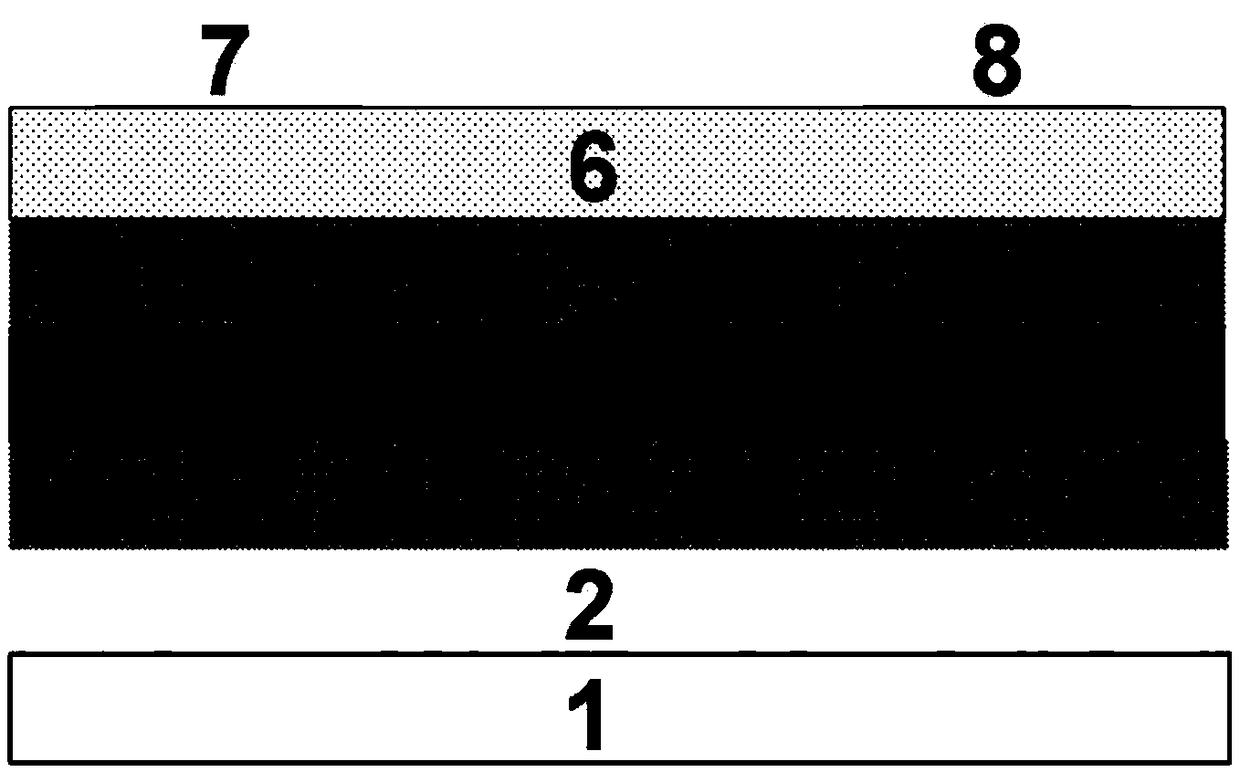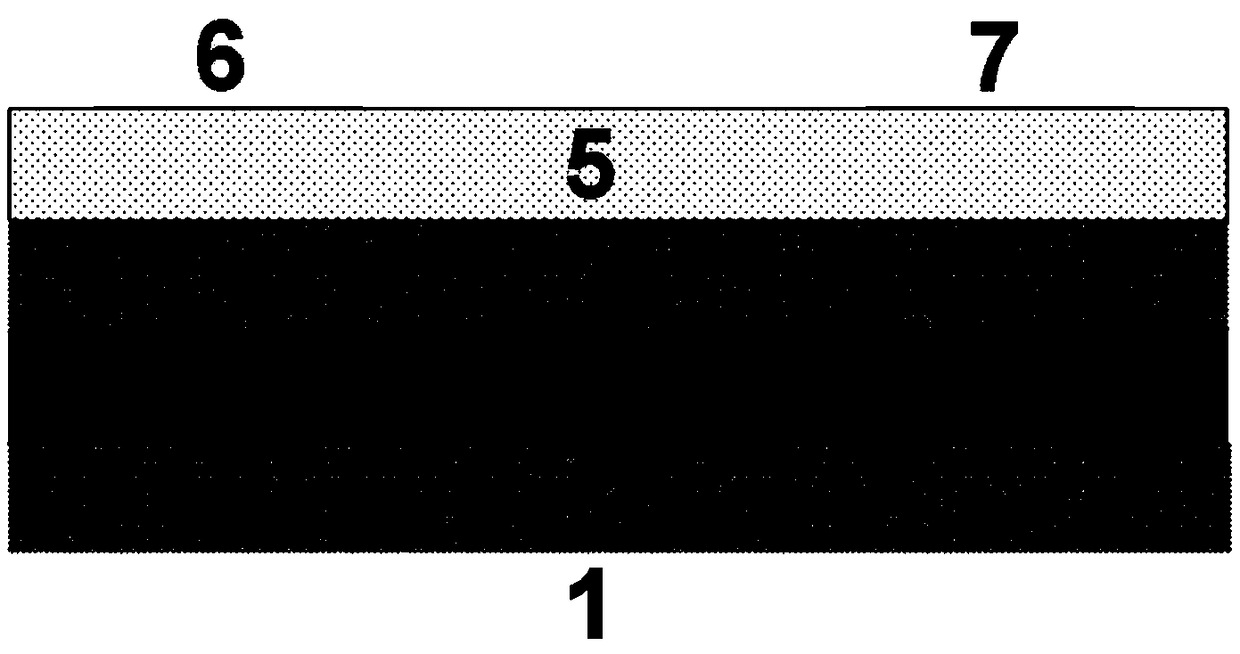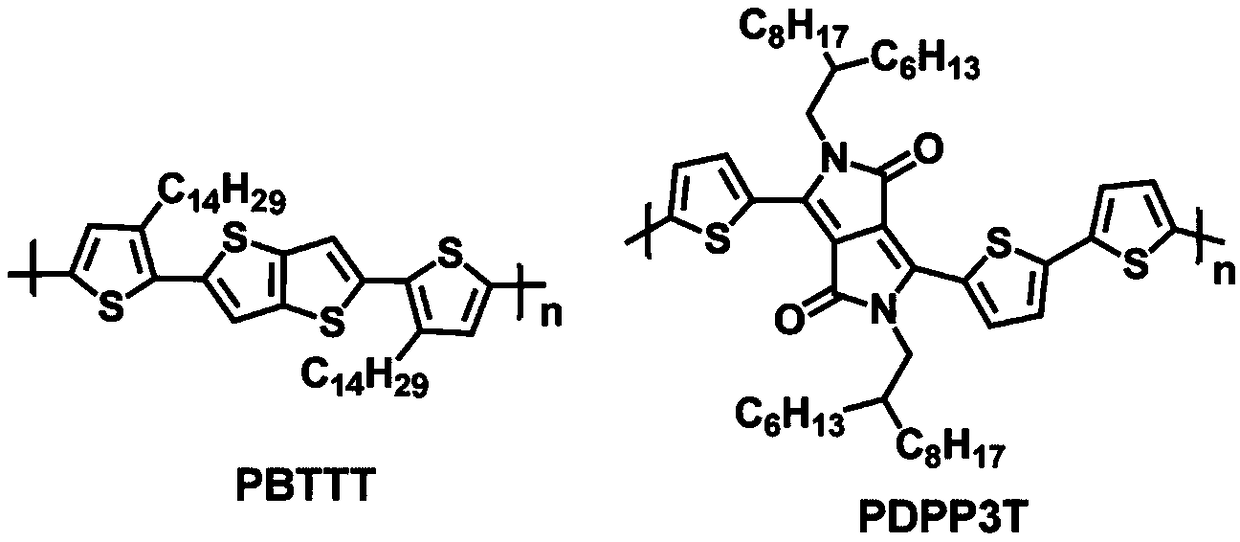Bionic adaptive sensor based on organic transistor and preparation method and application thereof
An adaptive and device technology, applied in semiconductor/solid-state device manufacturing, electric solid-state devices, semiconductor devices, etc., can solve problems such as no reports, achieve excellent signal amplification, achieve rapid attenuation, and be easy to prepare
- Summary
- Abstract
- Description
- Claims
- Application Information
AI Technical Summary
Problems solved by technology
Method used
Image
Examples
Embodiment 1
[0065] 1) After the glass substrate is ultrasonically rinsed with secondary water, ethanol and acetone, and blown dry with nitrogen, the vacuum degree is 7×10 -4 Under the condition of Pa Aluminum is vapor-deposited on the substrate at a speed of 30nm to obtain the gate electrode;
[0066] 2) Spin-coat polyvinyl alcohol cinnamate (PVC) on the patterned gate electrode obtained in step 1), wherein the concentration of PVC is 30 mg / mL, the solvent is chlorobenzene, and the rotation speed is 3500 rpm. Spin coating to obtain a PVC lower insulating layer with a thickness of 100nm;
[0067] 3) UV curing treatment is carried out on the PVC lower insulating layer obtained in step 2). The UV curing wavelength is 265nm, and the curing time is 20 minutes, and heat treatment is carried out on a hot stage for 1 hour, and then octadecyltrichlorosilane (OTS) gas phase is carried out. Modification, the modification is carried out in a vacuum oven at a temperature of 120°C for 3 hours;
[0...
Embodiment 2
[0074] Utilize the slow adaptation OFET gained in embodiment 1 to carry out electrical performance test, test result is as follows:
[0075] 1) Bias response test:
[0076] The output signal of the source-drain current under continuous gate voltage is as follows Figure 4 It can be seen that the source-drain current attenuates rapidly when the gate voltage remains constant, and the attenuation parameter is around 300 milliseconds, which is equivalent to the attenuation speed of the slow-adaptive receptors on human skin. It shows that the slow-adaptive OFET obtained above can effectively simulate the tactile slow adaptation.
[0077] 2) Speed response test:
[0078] For the human body, for the same intensity of stimulation, the faster the stimulation is applied, the stronger the human body's feeling will be. The speed response test is carried out on the obtained adaptive OFET, and the test results are as follows: Figure 5 As shown, it can be seen that when the gate volta...
Embodiment 3
[0084] According to the method of Example 1, only the parylene in the upper insulating layer obtained by chemical vapor deposition in step 5) is replaced by the PVA obtained by spin coating, that is, the fast adaptable OFET provided by the present invention is obtained;
[0085] Step 5) specifically includes:
[0086] 5) the semiconductor intermediate layer that step 4) obtains is carried out oxygen Plasma surface hydrophilization treatment, and the time is 20 seconds, and power is 24W, and spin-coats polyvinyl alcohol (PVA) on the semiconductor intermediate layer, and the concentration of PVA is 15mg / mL, the solvent is a mixed solvent of 50% ethanol and 50% deionized water, the rotating speed is 3000rpm, and the thickness of the PVA layer obtained is 50nm. Afterwards, heat treatment at 100°C for 1 hour on a hot stage, and then spin-coat a layer of PVC on the obtained PVA layer to smooth the surface. The concentration of PVC is 20mg / mL, the solvent is chlorobenzene, and the r...
PUM
 Login to View More
Login to View More Abstract
Description
Claims
Application Information
 Login to View More
Login to View More - R&D
- Intellectual Property
- Life Sciences
- Materials
- Tech Scout
- Unparalleled Data Quality
- Higher Quality Content
- 60% Fewer Hallucinations
Browse by: Latest US Patents, China's latest patents, Technical Efficacy Thesaurus, Application Domain, Technology Topic, Popular Technical Reports.
© 2025 PatSnap. All rights reserved.Legal|Privacy policy|Modern Slavery Act Transparency Statement|Sitemap|About US| Contact US: help@patsnap.com



